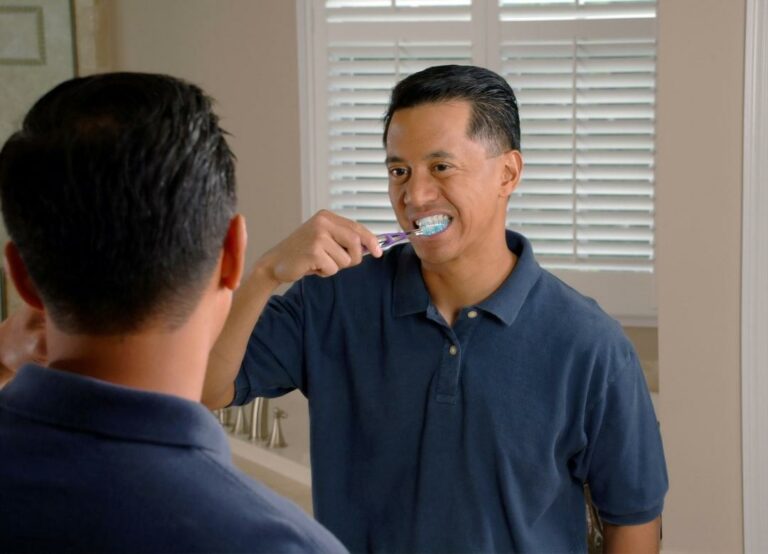How Do Braces Work?

When your teeth are crooked or your bite is less than perfect, your orthodontist will usually recommend using braces or clear aligners to correct the problem.
Your treatment will include multiple visits for adjustments or a new set of aligners, and once your teeth are pretty much where they’re supposed to be, you’ll be fitted with a retainer to keep them in place.
Of course, each mouth is a little different, and your orthodontist will customize your treatment to meet your needs.
The principle behind the orthodontic treatment is always the same, though.
How Do Braces Work?
Braces and clear aligners straighten your teeth by applying constant, gentle pressure on your teeth to change their position. As your teeth slowly move, the bones, blood vessels, and tissues in your jaw shift and change to accommodate them. Once your teeth are repositioned, using a retainer allows your bones and gums to fill in around your teeth so that the changes become permanent.
Orthodontic treatment may also include devices like palatal expanders which apply pressure to expand your jaw or elastics to retrain your bite and adjust how the upper and lower teeth fit together. This is how braces work for an overbite.
Whether treating minor misalignments or severe malocclusions, the basic idea of orthodontic treatment is that constant, steady pressure creates gradual, healthy changes.
How long does it take for braces to work?
Depending on the severity of the problems being treated, braces can straighten your teeth in as little as 6 months, or they might take as long as 2 years or more for complex malocclusions. After treatment, you’ll most likely need to wear a retainer until your teeth stabilize, which might be as long as your treatment.
Trying to straighten your teeth too quickly can damage your mouth. Your orthodontist schedules regular appointments to make sure you get results as soon as possible without risking injury.
Missing appointments, neglecting care, or not wearing your retainer regularly can lengthen your treatment time.
To be sure that your braces or aligners are as efficient and quick as possible, be sure to follow your orthodontist’s instructions about oral care, what to eat, and any precautions you need to take to prevent damage.
How long will it take for the pain of braces to stop?
When you first get your braces put on, you’ll probably experience discomfort for about a week while your cheeks and mouth adjust to the brackets and pressure. Getting brackets adjusted can be uncomfortable for a few days, though the pain is very manageable with over the counter pain relievers, salt water rinses, and time.
Much of the pain from traditional braces is caused by the brackets and wires rubbing against your cheeks and lips.
Using wax to cover wire can help, but the best thing to do about bracket irritation is to take a pain reliever and wait it out. When you develop calluses inside your cheeks and lips, the irritation will go away, and using wax or other barriers only prolongs the irritation.
The majority of your discomfort will probably occur the day after your braces are placed or adjusted. Eat soft and cold food, take it easy, and it will pass.
How do you know if you need braces?
If your bite is uncomfortable, your teeth are crooked, your jaw muscles hurt, or you have trouble with your oral health because cleaning is difficult, ask your orthodontist for an evaluation. Braces and aligners correct problems live overbites and underbites, narrow or protruding jaws, jaw pain due to misalignment, and other malocclusions. You can get braces for cosmetic reasons, too.
The decision to get clear aligners or braces is between you and your orthodontist.
Your dentist may recognize the signs that you or your child could benefit from orthodontic treatment and recommend that you schedule a consultation.
Whether for medical or cosmetic reasons, there are more options than you might think for straightening your teeth.
If you think you or your child might need braces, schedule an appointment to talk to your orthodontist. They’ll look at your unique situation and discuss your treatment options.



